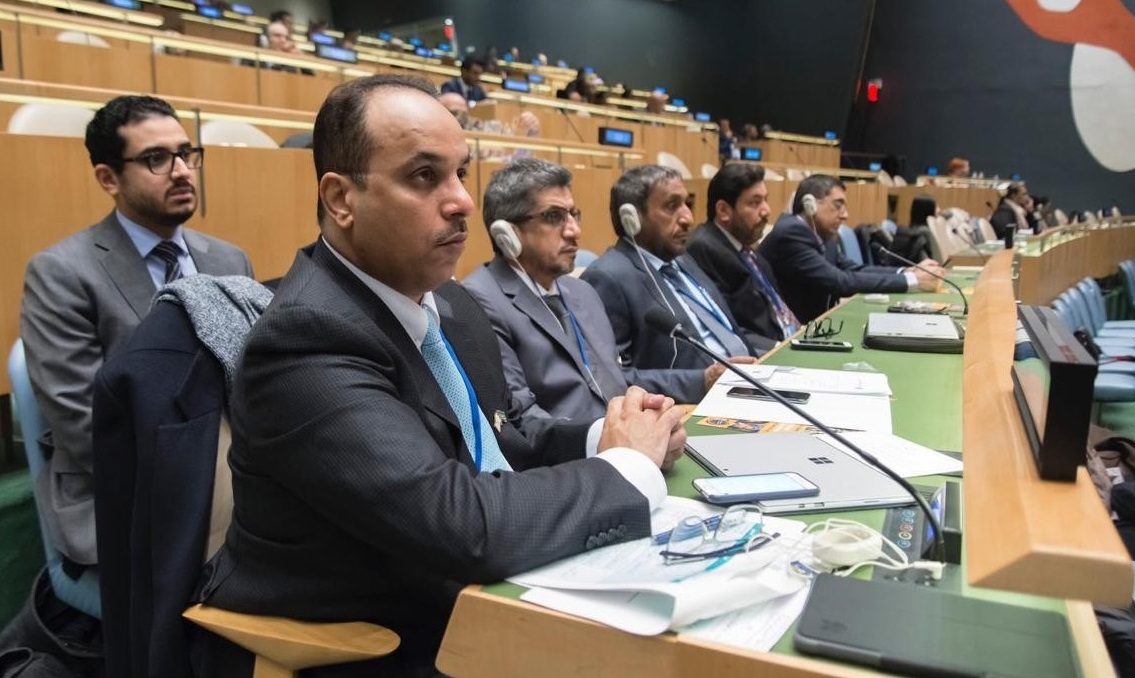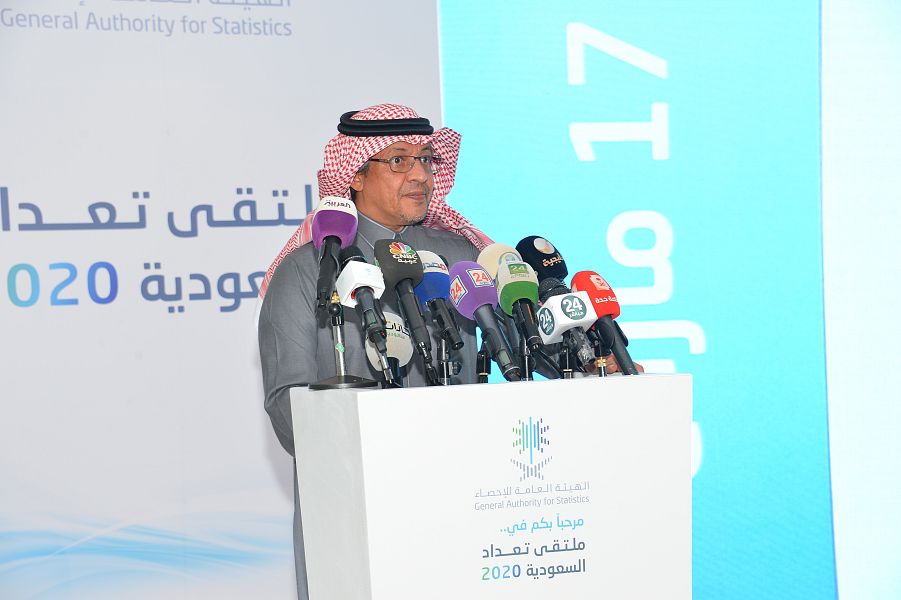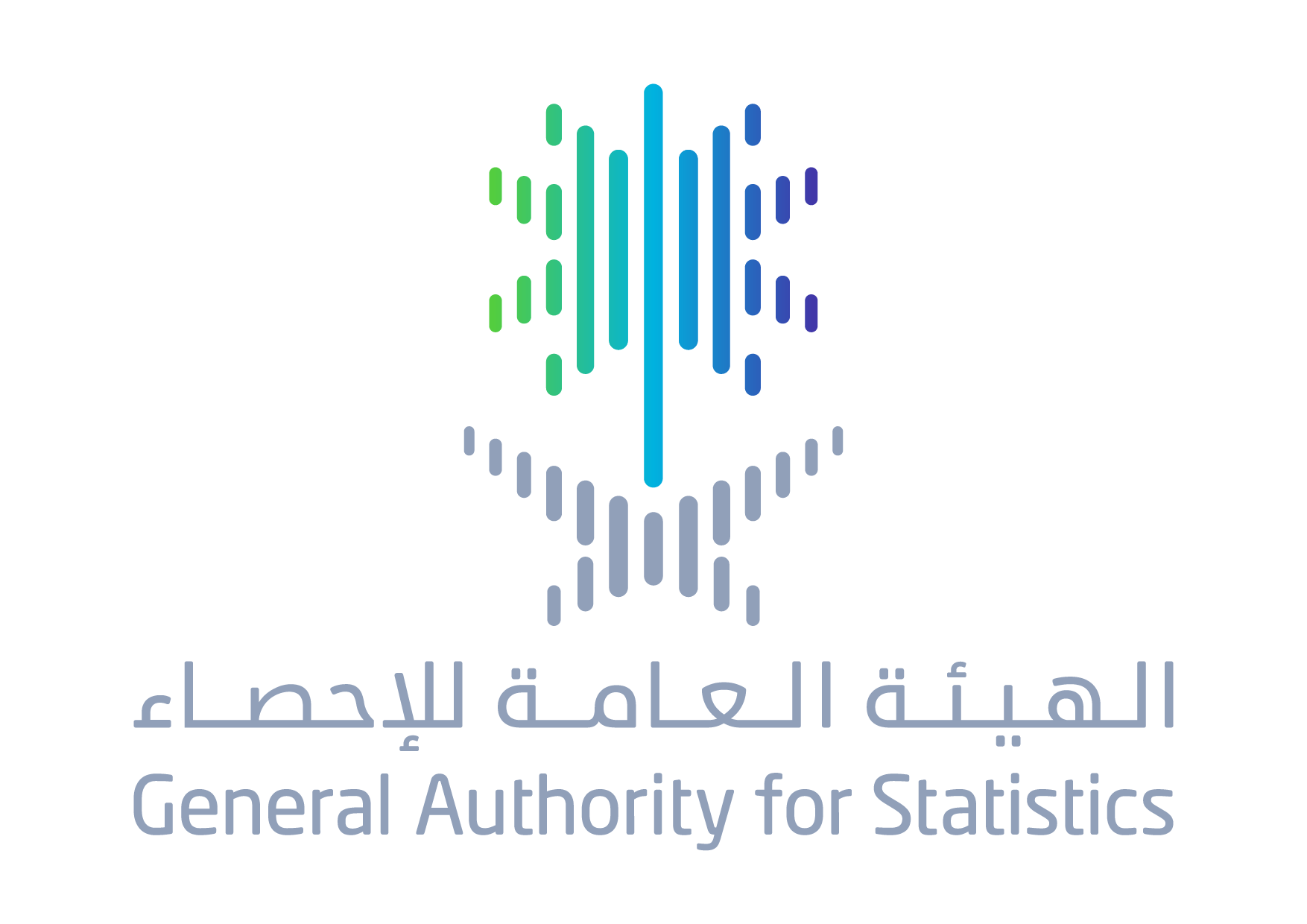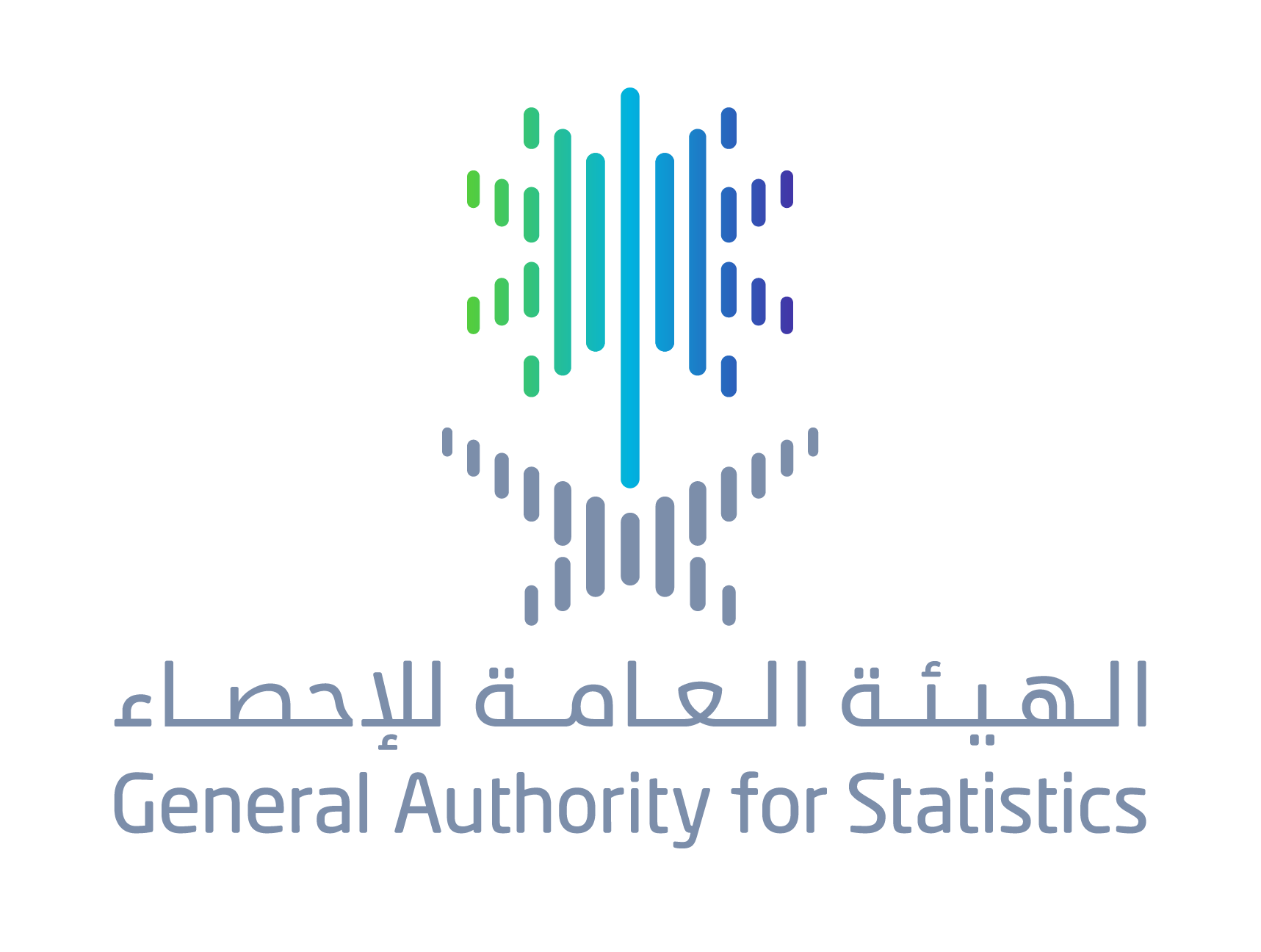
الهيئة العامة للإحصاء: المملكة على بُعدِ عامٍ من تعداد السعودية 2020
Tuesday Evening March 17th, 2020 is the Beginning of the Fifth Census’ Actual Enumeration
GASTAT: Saudi Arabia is One Year Away Until the Saudi Arabia Census 2020
The General Authority for Statistics (GASTAT) revealed that the fifth census of population, housing and establishments in Saudi Arabia “Saudi Arabia Census 2020” will start on Tuesday, March 17th, 2020, which is the beginning of the actual enumeration “evening of time reference”. The census will provide a broad statistical database to be used as a reliable basis when conducting studies and research required by the development programs and plans in Saudi Arabia and the Saudi Vision 2030. Furthermore, it provides statistical data and indicators to measure changes in population characteristics over time, conducts local, regional and international comparisons, and review and evaluate future population estimates.
In this Census, GASTAT will rely on different methods to ensure getting accurate information through linking data together in addition to the cooperation with the National Information Center and the Saudi Post. This is done in accordance with the preparations made by GASTAT and their partners in order to implement the “Saudi Arabia Census 2020”. This census will be different from previous censuses due to the change in the enumeration method by integrating the register-based data with field data.
The official spokesman of GASTAT , Mr. Taiseer Al-Mufrrej, said that GASTAT has completed the updating of the populated areas directory in all regions of the Kingdom, in addition to updating the postal addresses in several administrative regions, which are: Makkah, Madinah, Jazan, Najran, Al-Baha, the Northern Border, Tabuk, Hail and Al-Qassim. He also explained that during the month of Sha'ban the postal addresses in the city of Riyadh and the eastern region will be updated. He also added that the preparation of the operational plans for manpower, training, and publishing has been initiated. This is the first phase of the Saudi Arabia Census 2020, which will be followed by the second phase (the actual enumeration phase), then the third phase (data processing phase) then finally the announcement of the results.
The first official census in Saudi Arabia was conducted in 1394H. (1974), then the second was conducted in 1413H. (1992), followed by the third in 1425H.(2004). Finally, the fourth census made by the Central Department of Statistics and Information prior to the transformation into the General Authority for Statistics was conducted in 1431H. (2010). The total population in the 2010 census was (27,136,977) people.

المملكة تختتم مشاركتها في أعمال الدورة الـ (50) للجنة الإحصائية للأمم المتحدة
Saudi Arabia Ends its Participation in the Works of the United Nations Statistical Commission (50th Round)
Yesterday 9, Mar 2019, Saudi Arabia Ends its Participation in the works of the United Nations Statistical Commission (50th Round). It started last Tuesday until yesterday evening at the United Nations headquarter in New York City. The delegation was headed by his Excellency Dr. Fahad bin Sulaiman Altekhaifi, president of the General Authority for Statistics. The participation was an extension of the Authority strategy for international collaboration, Altekhaifi said. Also, to benefit from the best statistical practices to be reflected on the development of the statistical sector in Saudi Arabia, he added. Moreover, Saudi Arabia has reviewed a number of development axes for the statistical sector. The works of the (50th) meeting dealt with a number of important topics related to the role of statistical data in the development process, the fundamental principles of official statistics, open data and national quality assurance frameworks, regional statistical development, discussing all the matters related to national accounts and price, international trade statistics, industrial statistics, and statistics related to disasters, in addition to education statistics.
the General Authority for Statistics of Saudi Arabia will publish a statistical report of the goals of sustainable development indicators with social, economic and environmental dimensions in time series that will ensure measuring the progress in achieving them, President of GASTST clarified. Saudi Arabia is working alongside with international organizations of the indicators to measure all the indicators correctly, he added.
The Authority participated in the Works of the United Nations Statistical Commission through a variety of themes and issues, including: educational Statistics which indicated that training and education sector in the kingdom of Saudi Arabia witnesses an increasing attention under Saudi Arabia's Vision 2030, and national transformation program which has developed many initiatives related to the development of education and training and aims to raise the quality of education and training outputs, make them relevant to the labor market and encourage creativity and innovation in scientific research as the policy-making and planning in this field requires accurate and comprehensive data to support decision makers. It has also developed register-based data of education, through conducting a household survey regularly every three years for training and education.
General Authority for Statistics will provide a quality services in order to reach the expectations and the needs. It will also provide high quality services through statistical data collection as well as analyzing, keeping and publishing the data. Also, through implementing and improving the quality system. It seeks to fully implement the National Accounts System 2008 which helped in developing many forms of economic and household surveys to assist obtaining the necessary data to apply all the accounts in accordance with the concepts of the System of National Accounts 2008, GASTAT is also working to build national accounts and economic statistics capabilities to enable them to carry out their tasks in accordance with the recommendations of international standards.
GASTAT also stressed on the importance of understanding the system of national accounts for urgent economic developments, and prepare accessories to the System which clarifies how to address these developments through theoretical framework and applied framework as well as show experiences of countries.
It is worth mentioning that Saudi Arabia has been chosen with (11) countries globally to fill the membership of the board of directors of the International Comparison Program in the United Nation of the period 2017-2019, based on the vote of the Statistics Division of the United Nation and Data Development Group of the international bank to represent the countries of Western Asia. Saudi Arabia has been chosen to this membership as appreciation to the positive role of GASTAT in various statistical programs organized by the United Nation. The formation of the administrative structure of the International Comparison Program includes: United Nation Statistical Commission, management board (GASTAT membership), the joint work teams among agencies, consulting and technical coordination committees, as well as the implementing international agency (World Bank), regional offices, the Statistical Office of the European Union (Euro stat), the Organization of Cooperation and Development, and the participating national statistical offices.

الهيئة العامة للإحصاء تعلن عن ليلة الإسناد الزمني لتعداد 2020

الهيئة العامة للإحصاء تشارك في الاجتماع الرابع لمجلس الإدارة لبرنامج المقارنات الدولية 2019م
GASTAT Participates in ICP Board of Directors Fourth Meeting (2019)
The General Authority for Statistics (GASTAT) has participated in the International Comparison Program (ICP) board of directors fourth meeting held in New York, USA, on Sunday Jumada Al-Thani 26th, 1440 H. (March 3rd, 2019). Dr Fahad Altekhaifi, the President of GASTAT, indicated that the board of directors comprises eleven state members including the Kingdom of Saudi Arabia which represents West Asia. It discussed the progress reached so far in the implementation of the ICP of 2017, the communication and dissemination strategy, the preparation for the forthcoming session in 2020 in addition to the discussion of several other topics relevant to statistical work.
Dr Altekhaifi also added that the selection of Saudi Arabia to be a member in the ICP board of directors for the years 2017-2019 comes as a recognition of GASTAT positive role in the various statistical programs organized by the United Nation. He also said that it is an affirmation of the Kingdom’s active role in the world’s statistical map, and reflects the results of the statistical sector strategic transformation in the Kingdom, which is supported by the government due to its role in supporting national development decisions. The World Bank's International Comparison Program is a global statistical partnership program based on a statistical system that is integrally connected to the economic analysis. It uses statistical methods to derive the necessary data to calculate the PPP for about 200 countries and economies worldwide. It will facilitate the use of PPP as currency converters, which will allow the comparison of the total economic indicators and the economic conditions of countries worldwide which helps to allow users to track progress towards achieving sustainable development goals and effectively guide programs towards their goals. The program is geographically divided into six regions under the supervision of the ICP office at the World Bank.
Altekhaifi confirmed that the program’s work and results will help shape policies for global comparison to support statistical products of the participating countries. It will also enable GASTAT to access the best statistics global practices to improve and develop the statistical work.
It is noteworthy to mention that the ICP board of directors is compiled of, chairpersons, directors and leading experts in 11 statistical agencies participating in the program. They are distributed according to the regional areas: Africa, Asia, Pacific Islands, Latin America, the Caribbean, West Asia, Commonwealth of Independence States, European Union, non-European Union States, members of the organization for Economic Cooperation and Development, representatives of the International Monetary Fund, World Bank, UN Statistics Division, and the Inter-Agency Coordination Group.

الهيئة العامة للإحصاء: (17.40%) من السكان يمارسون الرياضة لأكثر من 150 دقيقة في الأسبوع
According to Households Sport Practice Survey in Saudi Arabia
GASTAT: (17, 40%) of population are practicing sports for more than 150 minutes on a weekly basis
GASTAT has released today the results of Households Sports Practice Survey, 2018. Households Sports Practice is one of the Saudi Vision 2030 requirements. In addition, this kind of practice includes indicators that are targeted by 2030.The data of survey allows conducting many developmental studies and plans in general, and in the sports field in particular. These studies and plans should support the development of many programs and initiatives that do increase the rate of Households Sports Practice. The survey methodology and form considered international standards and recommendations issued by ILO.
According to the survey results, the percentage of individuals (15 years and over) who are engaged in sports activities for more than 150 minutes weekly reached (17, 40%) compared to (82,60%) of individuals who do not practice sport. Saudi males and females practicing sport activities for 150 minutes or more per week hit (13.08%) of the total population of the Saudi Arabia for those aged 15 years and over. The percentage of Saudi males was (10.14%) while it hit (2.94%) for Saudi females. On the other hand, the percentage of non-Saudi males and females practicing sports activities for the same category was (4.32%).
The results of the survey showed that the percentage of individuals practicing walking activity was (56.05%) of the total number of sports participants. Walking is the most practiced activity by individuals in Saudi Arabia, followed by football activity where it reached (25.69%) out of total number of sport participants. In addition, the percentage of individuals who are engaged in bodybuilding activity reached (5.80%) out of total sport participants, running activity on the other hand hit (2.72%) out of total sport participants. Swimming activity is the least practiced sport activity by individuals according to the survey results where it reached (2.34%) out of total sport participants. (8.46%) represent the percentage of other types of sport practiced by individuals out of total sport participants.
The survey results revealed that the reasons of not practicing sports among Saudi population
varied. Some individuals have no desire to practice sport with a percentage of (44.73%), followed by those who do not have the time to practice sport with (29.74%) out of total number of individuals who do not practice sport. Those who didn’t have accessible facilities inside the district
which reached (13.09%) out of total number of individuals who do not practice sport. Additionally, individuals who cannot practice sport due to injury or disability reached (10.83%) out of total number of individuals who do not practice sport. Finally, individuals who cannot practice sport due to other reasons reached (1.64%) out of the total number.
Field survey of Household Sport Practice aim to provide recent statistical data and indicators about the extent of sport practice for households as well as identifying the reasons behind not practicing sports according to the kind of relationship with the household head. The classification was by gender, nationality, educational status, age and marital status. The survey also provides data about the percentages of sport practice by households at the administrative regions level.
GASTAT: Saudi Unemployment Rate Falls in Q3 of 2018
GASTAT Releases Labor Market Bulletin for Q3 of 2018
GASTAT: Saudi Unemployment Rate Falls in Q3 of 2018
General Authority for Statistics (GASTAT) has released Labor Market Bulletin for Q3 of 2018. It has been published on GASTAT's official website www.stats.gov.sa, in accordance with surveys of labor force conducted by the Authority on a quarterly basis, together with data of labor market, based on administrative records of relevant entities. Such entities include: Ministry of Labor and Social Development, Ministry of Civil Service, General Organization for Social Insurance, Human Resources Development Fund, and National Information Center.
The economic participation rate of total population (15 years and above) has risen by (56.4%)for Q3, compared to (56.2%) for Q2. During the same period, the economic participation rate for total Saudis, at (42.0%), and for Saudi males (15 years and above) at (63.5%), has not changed in Q3. However, the economic participation rate of Saudi females (15 years and above) has increased to (19.7%), compared to (19.6%)in the previous quarter, results showed.
According to the survey's data, unemployment rate of total Saudis (15 years and above) has fallen to (12.8%), compared to Q2(12.9%). Moreover, unemployment rate of total population (15 years and above) has stabilized at (6.0%) in Q3 of 2018. Concerning genders unemployment rate, it has decreased for both sexes, reaching (30.9%), compared to (31.1%) in Q2 for (Saudi females), in addition to (7.5%), compared to (7.6%) in Q2 for (Saudi males).
The total number of workers, according to administrative records of Saudi Arabia, has witnessed a decline in 2018 by (12,688,042) persons for Q3, compared to (13,018,066) persons for Q2, with a decrease of (330,024) persons. Regarding Saudis, the number of workers, based on administrative records, has edged down to (15,356) persons, reaching (3,109,987) persons, compared to (3,125,343) persons for Q3 and Q2, respectively, the report noted.
For non- Saudis, the number of male workers, based on administrative records of Saudi Arabia for 2018, has fallen to (8,622,890) persons in Q3, compared to Q2 (8,927,862) persons, with a decrease of (304,972) persons. Additionally, the number of female workers has dropped by (9,696) persons, reaching (955,165) persons in Q3, compared to (964,861) persons in Q2, according to the results.
Based on the bulletin's results, data of Ministry of Civil Service (Jdarah and Saed programs), and data of Human Resources Development Fund (Hafiz and Taqat programs), the total number of Saudi job seekers, according to Saudi Arabia's administrative records, has decreased by (195,297) persons, recording in Q3 (923,504) persons, compared to (1,118,801) persons in Q2.
It is worth mentioning that job seekers have been defined by GASTAT as: Saudi individuals (males or females) enrolled in job search programs of Ministry of Civil Service (Jdarah or Saed), and Human Resources Development Fund (Hafiz). Further, they register their personal data, qualifications, occupational experiences, and CVs through an electronic system. It is important to keep in mind that job seekers are not subject, in administrative records, to the internationally recognized standards and conditions of unemployment approved by the ILO; therefore, they are not considered to be unemployed. Hence, not every job seeker is considered unemployed, s/he may be looking for work, and is working in another job at the same time. This also applies in situations of self - employed workers, who are looking for government entities job, and are not registered as workers in government records (Civil Service, Social Insurance, commercial records, and municipal licenses). For example, self-employed persons who do not work inside establishments.

الهيئة العامة للإحصاء: استقرار الرقم القياسي لأسعار الجملة لشهر ديسمبر 2018م
General Authority for Statistics (GASTAT): Stability in Wholesale Price Index, December 2018
On Wednesday, the 17th of Jumada al-Awwal 1440H corresponding January 23, 2019, The General Authority for Statistics (GASTAT) released its monthly indicator for Wholesale Price Index (December 2018) on its official website www.stats.gov.sa.
The wholesale price index stabilized at (116.9) in December 2018, and did not record any change compared to the previous month (November 2018).
The indicator includes five sections, which are: agriculture and fishery products section, ores and minerals section, food and beverages products, tobacco and textiles section, mineral products, machines and equipment section and other goods.
Today’s report attributed the index’s stability of the wholesale prices of December to the changes of the five sections composing the index, where two of them have increased; which are: mineral products, machines and equipment section (0.5%) and other goods (0.1%).
In turn, three sections went down, which are: agriculture and fishery products section (1.4%), food, beverages, tobacco and textiles (0.4%), raw materials and metals (0.1%).
Wholesale price index in Saudi Arabia measures average changes in goods prices and services sold in primary markets taking into consideration that the change is only in price, so consequently, all changes resulting from variation in qualities or discount in quantities or variation in method of shipping and other influential factors are excluded to get only net price after excluding all the mentioned indicators. This number is for everyone and it is prepared based on Saudi Arabia
Additionally, wholesale price index is used to monitor changes in the prices of local or imported goods, which are dealt with in the market, consequently to identify price trends and market conditions. The wholesale price index is an important tool to prepare national accounts, by saving income and national accounts from the impact of price change.
GASTAT Releases Housing Bulletin to Describe Households’ Dwellings Until the Mid of 2018
“Owned dwellings” increases, rented dwellings decreases with the growth of households numbers
GASTAT Releases Housing Bulletin to Describe Households’ Dwellings Until the Mid of 2018
On Saturday 20th of Jmadah AL-Awal 1440 (January 26th ,2019), GASTAT released Housing Bulletin on its official website www.stats.gov.sa which combines the results of the field survey that was held between 17/7/1439 and 22/8/1439 corresponding to (14/4/2018 to 18/5/2018) as well as record-based data provided by Ministry of Housing related to housing support . The bulletin aims at providing data of dwellings occupied with Saudi households (owned, rented, employer-provided housing) at Saudi Arabia’s administrative level. Additionally, the bulletin studies the characteristics of the dwelling and its surrounding environment, creates a database for dwellings, meets the local and international requirements as well as the needs of researchers and planners related to dwellings characteristics that are required by developmental plans. The bulletin also provides periodical data and indicators to measure the change in dwellings over time as well as conducting international, regional and local comparisons. Finally, it measures the improvements and the growth of the housing fields according to the type and age of the dwelling occupied by the household.
On the other hand, Housing Bulletin showed that the number of Saudi households increased to (3.591.098) until the mid of 2018. For the same period, the results showed that the number of owned dwellings occupied with Saudi households increased (3.43%) compared to the same period of 2017 where owned dwellings occupied with Saudi households and used all construction materials reached (60.49%). Moreover, owned dwellings excluding dwellings that were built with “non-reinforced” construction materials reached (51.70%) compared to (41.91%) in the middle of 2017. The percentage of rented dwellings occupied with Saudi households decreased by (37.63%) in the middle of 2018 compared to (38%) in the middle of 2017. However, these percentages do not reflect the percentage of individuals who owned dwellings but the type of dwelling (owned, rented, employer-provided housing) that may be occupied by one household or more.
In addition, the bulletin showed that the number of dwellings occupied with Saudi households in Saudi Arabia increased (2.46%) in the middle of 2018 compared to the middle of 2017. Dwellings occupied with Saudi households (owned, rented, employer-provided housing) until the mid of 2018 reached (64.2%) out of total dwellings in Saudi Arabia where the highest percentage was recorded in Makkah with (24.96%) followed by Riyadh with (23.68%), then in the Eastern Region with (14.31%), Asir (8.55%), Madina (6.92%), Jazan (4.93%), AL-Qassim (4.64%), Tabuk (3.37%), Hail (2.22%), Najran (1.90%), AL-Baha (1.88%), AL-Jouf (1.60%), finally, Northern Boarders (1.04%).
In regard to the materials used in dwellings construction and occupied with Saudi households (owned, rented, employer-provided housing), the results showed that reinforced construction increased by (4.31%) compared to the mid of 2017. Dwellings occupied with Saudi households (owned, rented, employer-provided housing) and were built with (bricks) decreased by (9.2%) in the mid of 2018 compared to the mid of 2017 where dwellings occupied with Saudi households and were built with reinforced construction reached (89.54%) and dwellings occupied with Saudi households and were built with (bricks) reached (10.44%).
The results also showed that the majority of dwellings (99.85%) occupied with Saudi households (owned, rented, employer-provided housing) depend on a public network as main source for electricity and are occupied with (99.86%) out of total Saudi households’ individuals.
GASTAT confirmed that the results of the Housing Survey indicate the status of Saudi households’ dwellings until the mid of 2018. On the other hand, the record-based data of the Ministry of Housing showed the number of beneficiaries of the subsidized housing provided by “Sakani” program reached (67.070) Saudi households at the administrative level during 2018.
General Authority for Statistics (GASTAT) Released Real Estate Price Index Q4, 2018
General Authority for Statistics (GASTAT) Released Real Estate Price Index Q4, 2018
On Thursday, 18th of Jumada al-Awwal 1440H corresponding to January 24, 2019, General Authority for Statistics(GASTAT) released the report of Real Estate Price Index, Q4 2018 on its official website www.stats.gov.sa .
The real-estate price index has recorded a decline by (2.3%) compared to the previous quarter (Q3, 2018), where the indicator of the Real Estate Price index reached (80.4) in the fourth quarter of 2018 compared to (82.3) in (Q3, 2018). This decline can be attributed to the decrease in the main sectors composing it: housing sector (2.6%), commercial sector (1.7%), and agricultural sector (0.1%) compared to the third quarter of the current year.
In fact, the housing sector witnessed an increase in the residential houses by (0.5%) during the 4th quarter of 2018 compared to the previous quarter. On the other hand, residential lands decreased by (0.6%) as well as villas (1.7%), residential buildings (0.6%), apartments (0.2%), commercial plots (0.7%) compared to the previous quarter. Commercial centers have also decreased by (0.2%) and the agricultural sector recorded a decline by (0.1%).
It is worth mentioning that real estate price index is based on record-based data available at the Ministry of Justice. This indicator is an important tool to support economic and statistical decision makers regarding the changes of property prices and future forecasts during different periods of time. Real estate price index includes three main sectors consisting of several categories of real estate: housing sector which includes the following (plot of land, building, villa, apartment and house), commercial sector includes (plot of land, building, exhibition/ commercial center and shop), and the agricultural sector with only one category which is the agricultural land.
The real estate price index aims at finding accurate real estate statistical indicators that measure the real estate market in Saudi Arabia according to internationally recognized scientific principles and standards. It also aims at filling the data gaps related to the real estate field and is considered as an important tool to support economic decision makers in this field.
